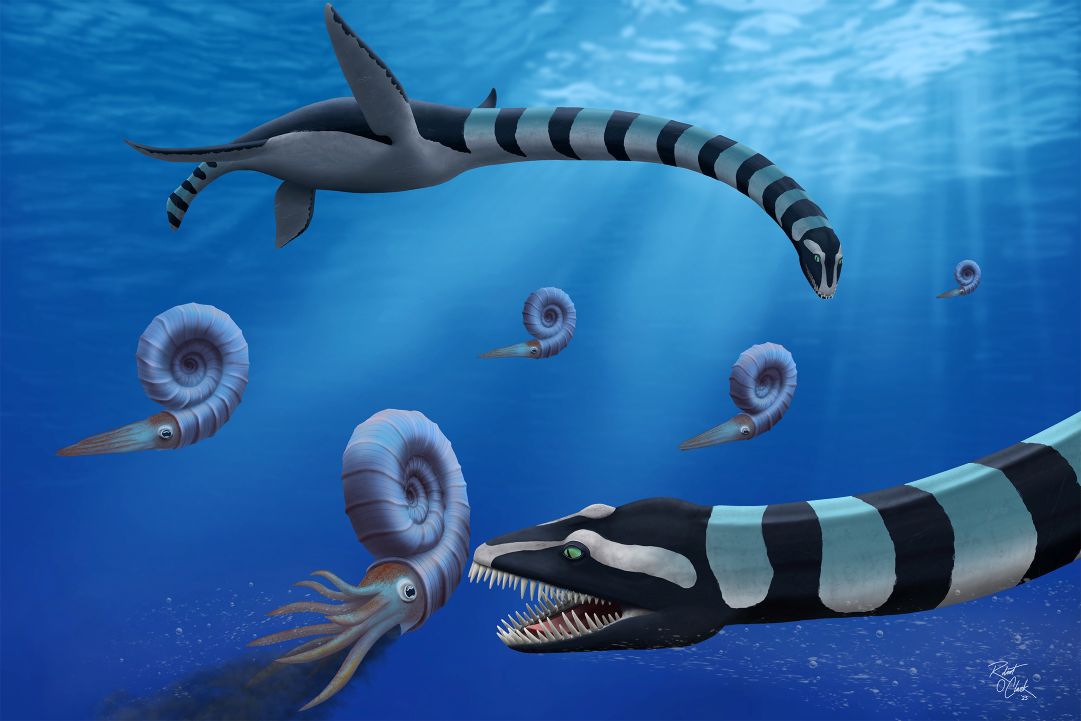
Marshall University researchers, working with an international investigative team from Chile and Canada, have identified a group of fossils as belonging to a new genus of sea creature, unlike any previously known.
Traskasaura sandrae, officially named in the new study, was a 39-foot-long, long-necked creature with large, sharp and robust teeth well-suited for crushing. It also could attack prey above by virtue of its elongated neck.
Published in the peer-reviewed Journal of Systematic Paleontology, the findings reveal that Traskasaura displayed a unique combination of both primitive and advanced traits not seen in any other elasmosaur, a genus of plesiosaur.
“Plesiosaur fossils have been known for decades in British Columbia,” explains lead author F. Robin O’Keefe, a Marshall biology professor who is an acknowledged expert on marine reptiles from the age of dinosaurs. “However, the identity of the animal that left the fossils has remained a mystery, even as it was declared BC’s provincial fossil in 2023. Our new research published today finally solves this mystery.”
O’Keefe and his Marshall team have published widely in journals including Science, Nature and Systematic Biology. For more information on their work and the Department of Biological Sciences, visit Biological Sciences – Marshall University.
